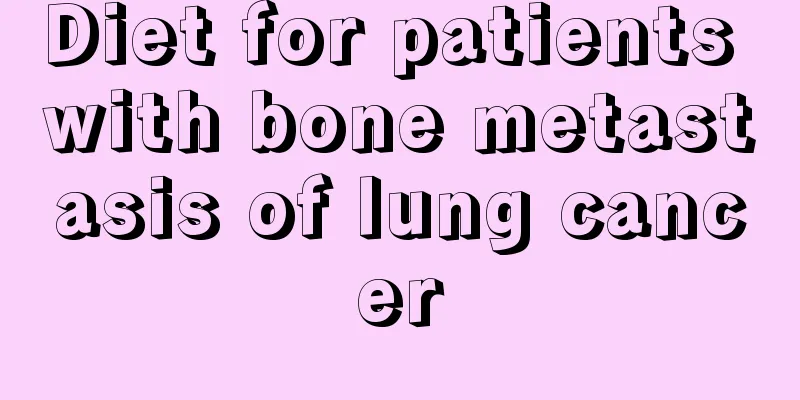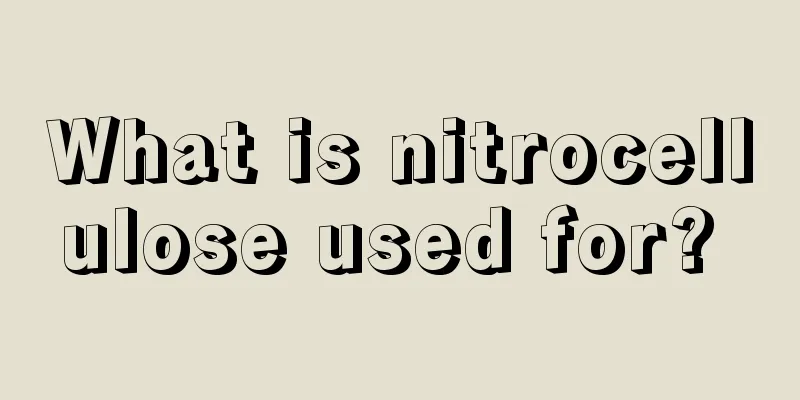What to do if you have swollen and painful hemorrhoids?

|
In the medical field, there is a saying that nine out of ten people suffer from hemorrhoids. This means that one out of ten people suffers from hemorrhoids. This shows how common hemorrhoids are. At the same time, hemorrhoids are one of the most common anorectal diseases in my country. Why are so many people sick? Take work and study as an example. Nowadays, people spend most of their time on work and study. Sitting in a chair for a long time. It is one of the factors that cause hemorrhoids. In addition, people nowadays sacrifice their normal meal time for work and study. Leading to irregular eating. The resulting constipation. Over time, you will get hemorrhoids. What to do if you have swollen and painful hemorrhoids? 1. Non-surgical treatment Asymptomatic hemorrhoids do not require treatment; symptomatic hemorrhoids do not require radical treatment; non-surgical treatment is the main treatment. (1) General treatment is applicable to most hemorrhoids, including the early stages of thrombotic and incarcerated hemorrhoids. Pay attention to your diet, avoid alcohol and spicy foods, increase fiber foods, eat more fruits and vegetables, drink more water, change bad bowel habits, keep bowel movements smooth, take laxatives when necessary, and clean the anus after defecation. For prolapsed hemorrhoids, be careful to gently push the hemorrhoids back with your hands to prevent them from falling out again. Avoid sitting or standing for long periods of time, do appropriate exercise, take a sitz bath in warm water (which may contain potassium permanganate) before going to bed, etc. (2) Local medication has been widely used. The drugs include suppositories, ointments and lotions, most of which contain Chinese herbal ingredients. (3) Oral medications are generally used to treat varicose veins. (4) Injection therapy is more effective for grade I and II bleeding internal hemorrhoids. The sclerosant is injected around the venous plexus in the submucosal layer to cause an inflammatory reaction and fibrosis, thereby compressing the varicose veins. The treatment can be repeated after one month to avoid injecting the sclerosant into the mucosal layer and causing necrosis. (5) Physical therapy: laser therapy, cryotherapy, direct current therapy, copper ion electrochemical therapy, microwave thermocoagulation therapy, and infrared coagulation therapy are rarely used. (6) Use rubber band to ligate the root of the hemorrhoids, blocking their blood supply and causing them to fall off and necrotize. This method is suitable for grade II and III internal hemorrhoids, and is more suitable for giant internal hemorrhoids and fibrotic internal hemorrhoids. 2. Surgery (1) Indications for surgery: Conservative treatment is ineffective, hemorrhoids are severely prolapsed, large fibrotic internal hemorrhoids are not well treated with injections, and there are anal fissures, anal fistulas, etc. (2) Surgical principles: Surgery is performed to reposition the prolapsed anal cushion and preserve the structure of the anal cushion as much as possible, thereby minimizing the impact on the ability to control bowel movements. (3) Preoperative preparation: When there are ulcers or infections on the surface of internal hemorrhoids, conservative treatment such as laxatives and warm water sitz baths should be performed first, and surgery can be performed after the ulcers have healed; bowel preparation should also be performed. (4) Surgical methods ① Thrombosed external hemorrhoidectomy is suitable for patients whose pain does not ease or the swelling does not shrink after conservative treatment of thrombosed external hemorrhoids. ② Traditional hemorrhoidectomy is external peeling and internal ligation. ③ Circumcision of hemorrhoids (Whitehead procedure) is a classic procedure in textbooks, which can easily lead to anal stenosis and is rarely used in clinical practice. ④PPH surgery: hemorrhoidal rectal mucosal circumcision and stapling with stapler. It was created by Italian doctor Longo and began to be promoted in 1998. It is mainly suitable for prolapsed III-IV grade mixed hemorrhoids, annular hemorrhoids, and some severely bleeding II grade internal hemorrhoids. The mechanism of PPH in treating prolapsed hemorrhoids: circular resection of 2 to 3 cm mucosa and submucosal tissue at the lower end of the rectum to restore the normal anatomical structure, i.e., the anal cushions are returned to their original position; the resection of the submucosal tissue blocks the blood supply of the superior hemorrhoidal artery to the hemorrhoidal area, causing the hemorrhoids to shrink after surgery. Compared with traditional hemorrhoidectomy, PPH surgery has shorter operation time, less postoperative pain, faster recovery and fewer complications, but the equipment is more expensive. (5) Postoperative treatment: Observe whether any complications occur, pay attention to diet, and maintain smooth bowel movements. |
<<: Ankle pain after exercise?
>>: What should I do if my wisdom tooth gums are swollen and painful?
Recommend
Is it better to have a rhinoplasty with thread carving or a prosthesis
In modern society, rhinoplasty surgery has been r...
Successful experience in preparing for pregnancy at the age of 45
If a woman becomes pregnant after the age of 35, ...
How to prevent abdominal distension caused by ovarian cancer?
Experts believe that stomachache and bloating are...
One method to check whether your blood vessels are blocked, it works all the time!
While walking, jogging or other exercises, you ma...
Which disinfectant is better for hand, foot and mouth disease?
Hand, foot and mouth disease is a common disease ...
What are the best treatments for pituitary tumors?
Due to lack of exercise, not often getting sun ex...
What is the reason for the throat noise
The larynx is an important part of the human body...
Can I have sex two months after pregnancy?
When a woman is two months pregnant, she is still...
What are some tips for relieving itching from damp bumps?
In daily life, the humidity in the air can easily...
How to use dental floss stick? This is how dental floss should be used
Teeth are very important for your image, and if t...
How to sober up quickly, effectively and simply_How to sober up quickly
Drinking too much will make you feel very uncomfo...
Can people with scars use cupping?
People with scar-prone constitutions are difficul...
What to do about hip nerve pain?
Buttock neuralgia is actually quite common. When ...
What are the symptoms of getting angry
Getting angry is a common physical condition in r...
What to do if your adolescent child hates studying
Adolescence is a very important period when child...









